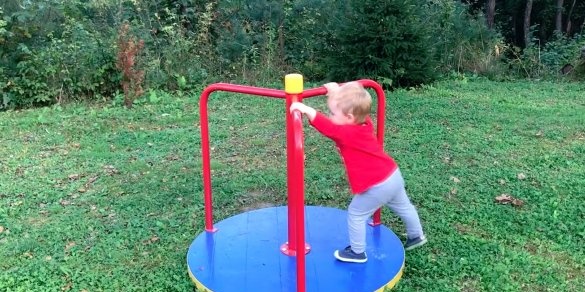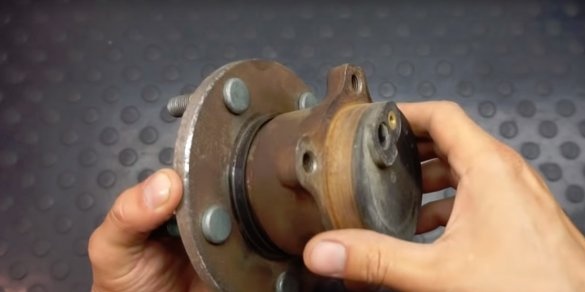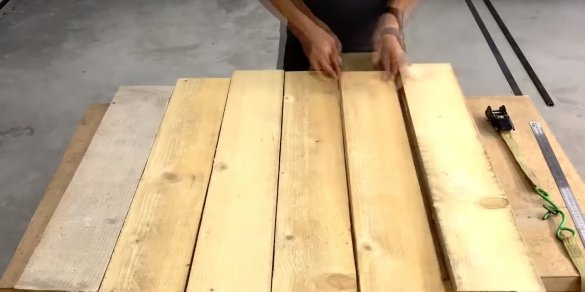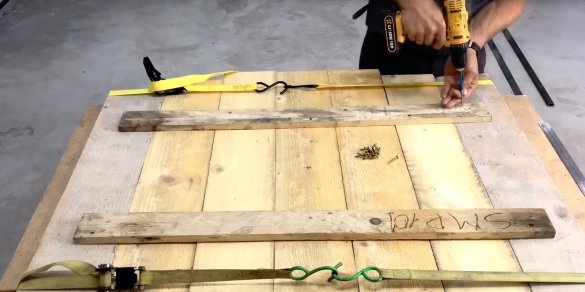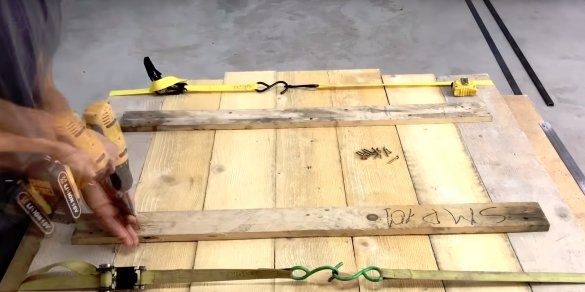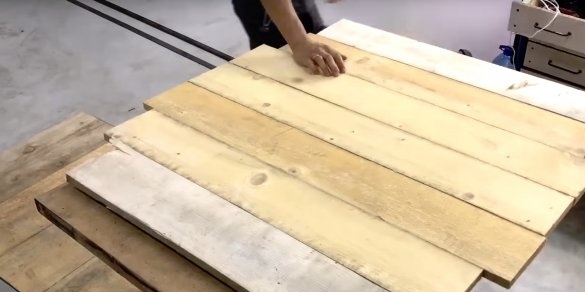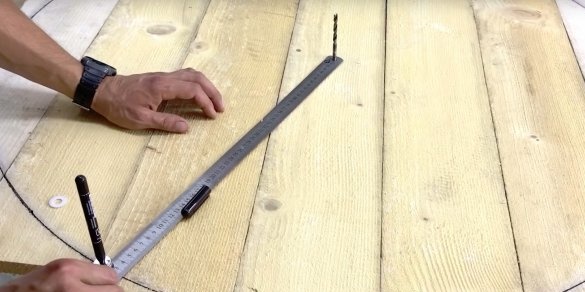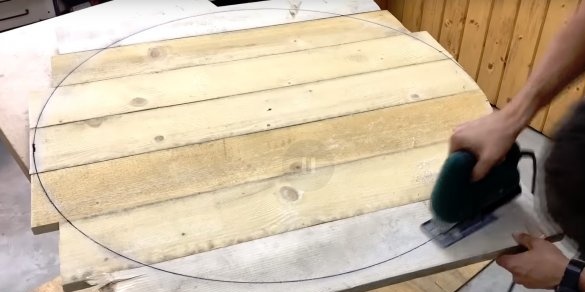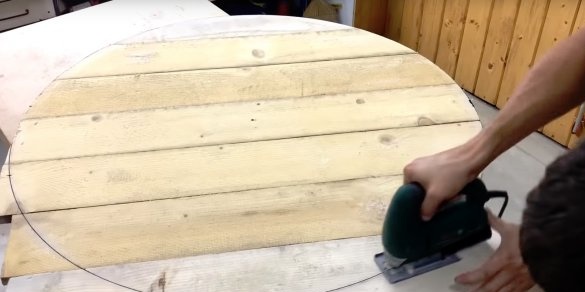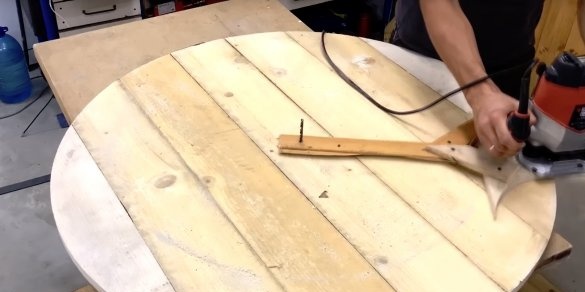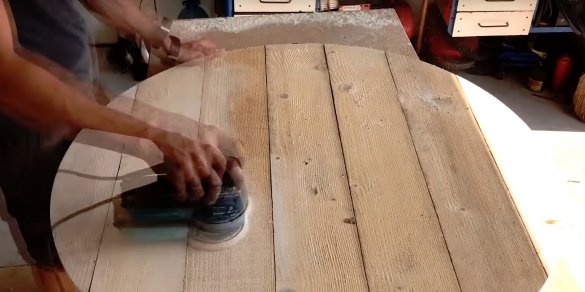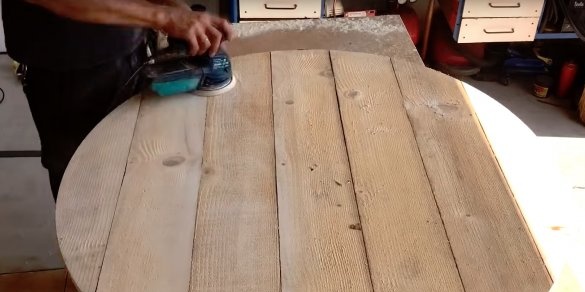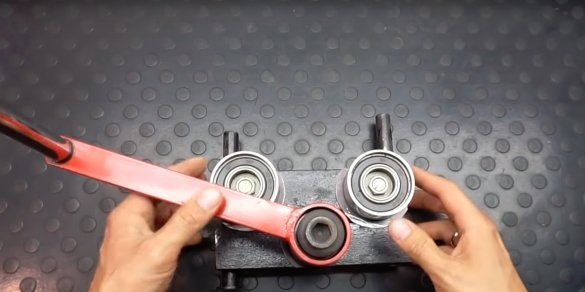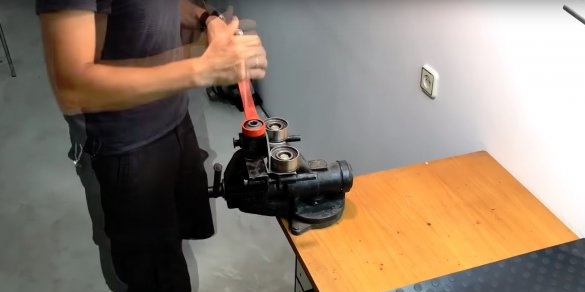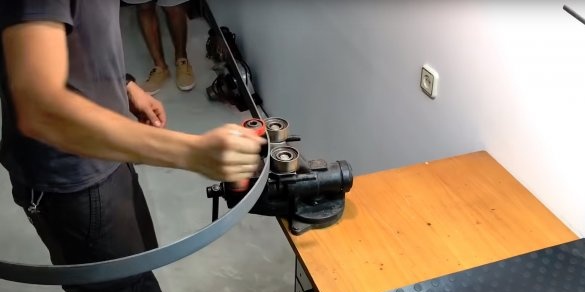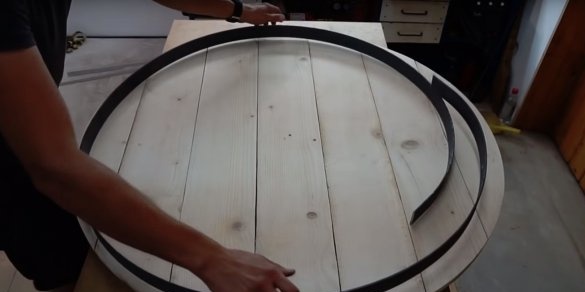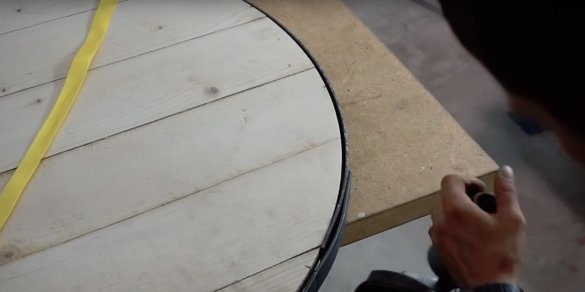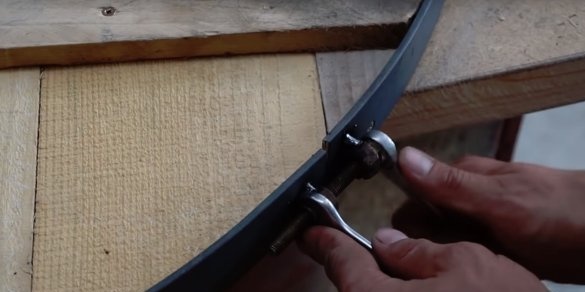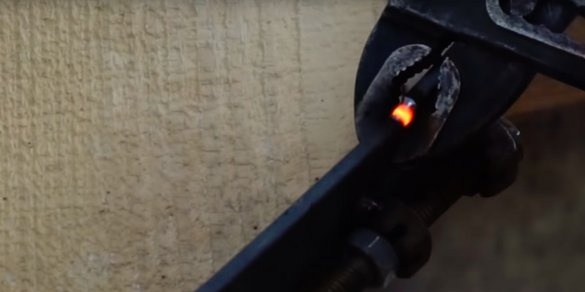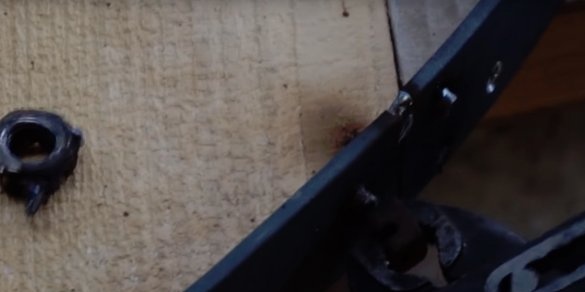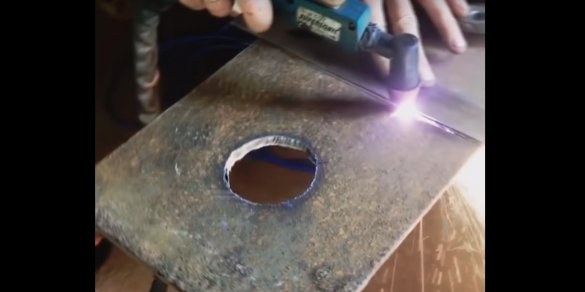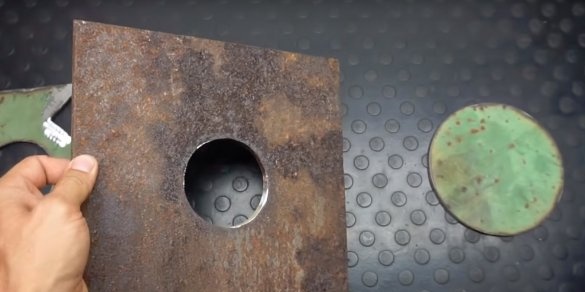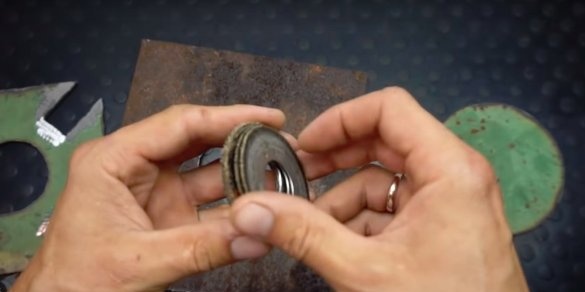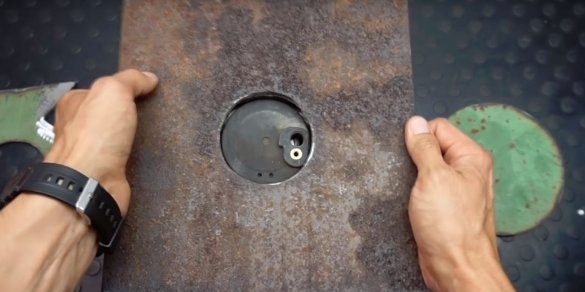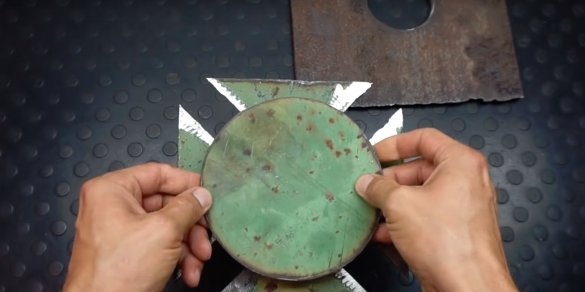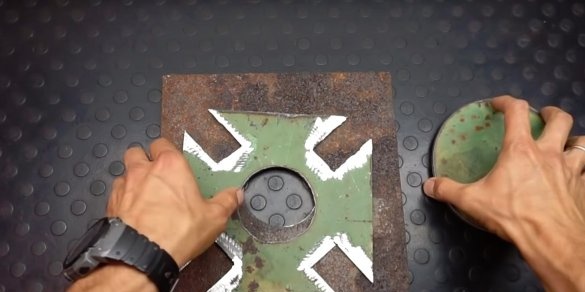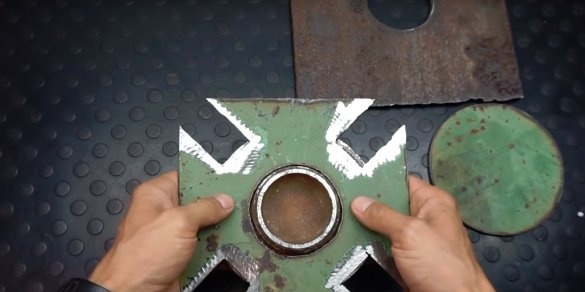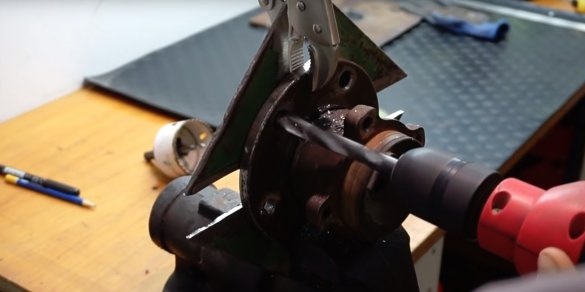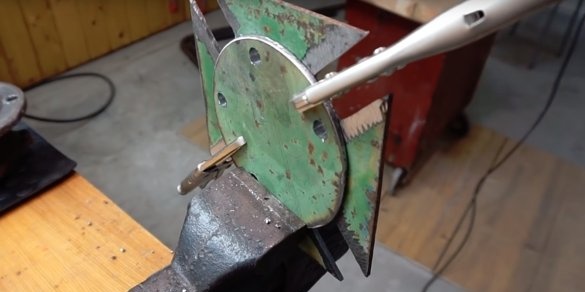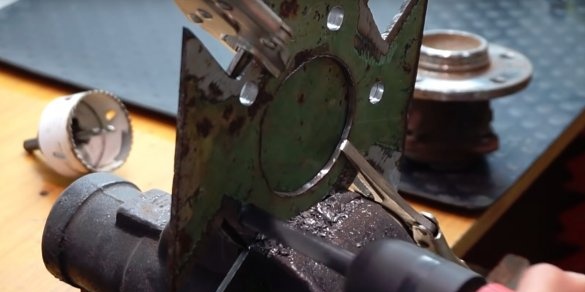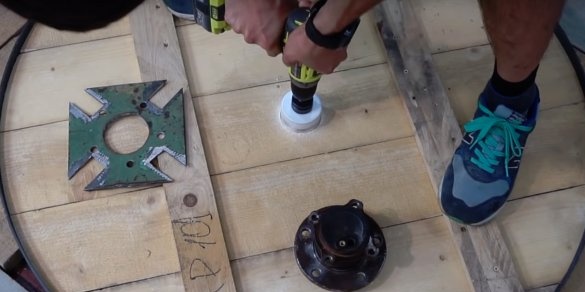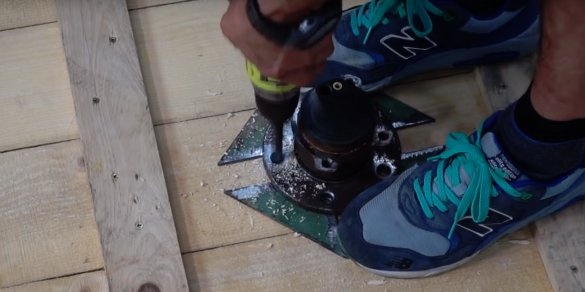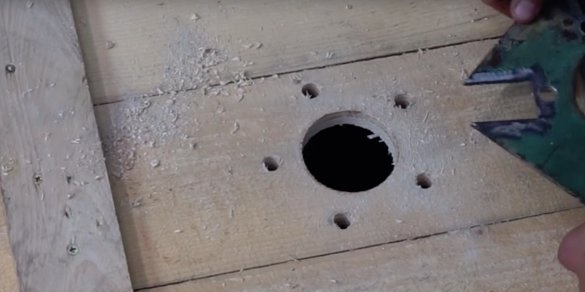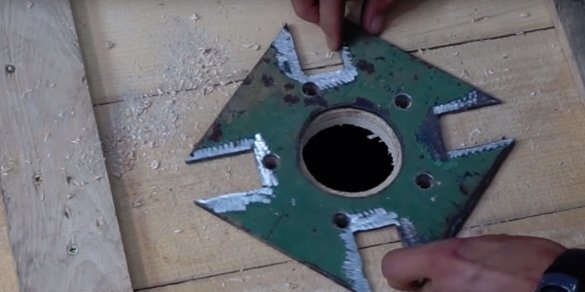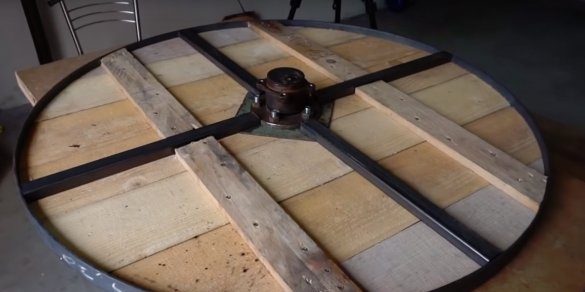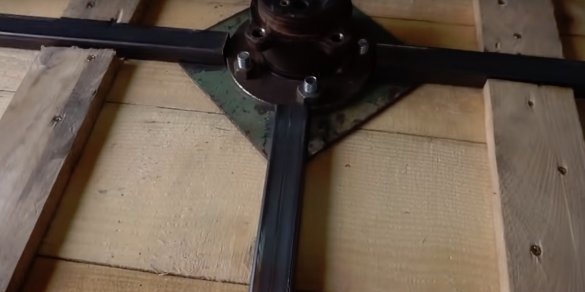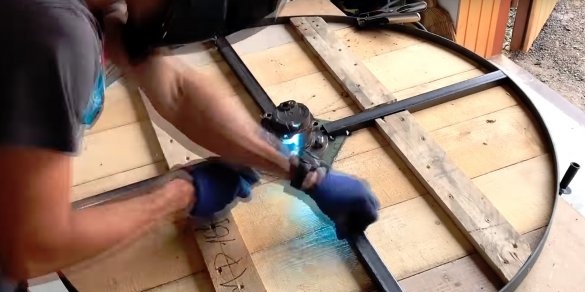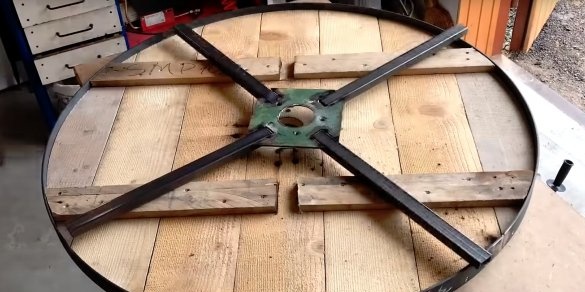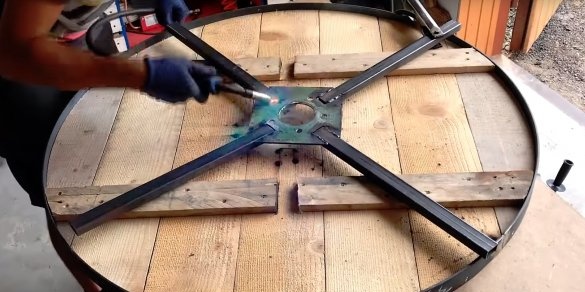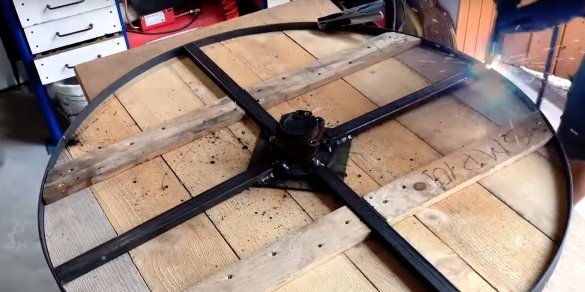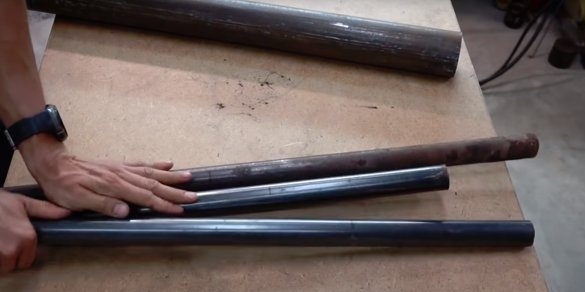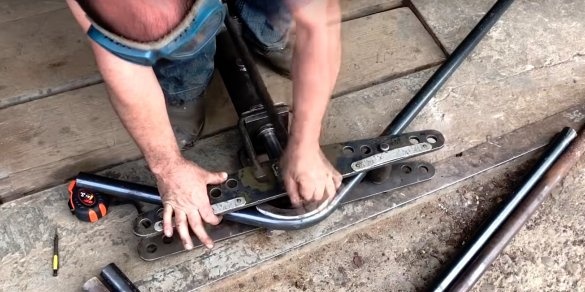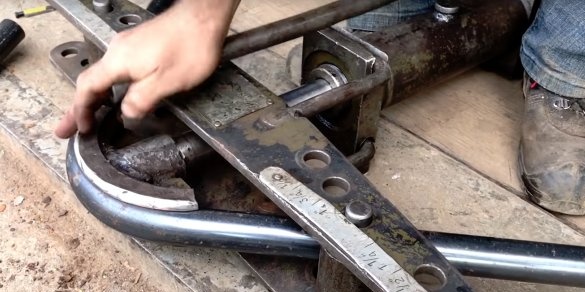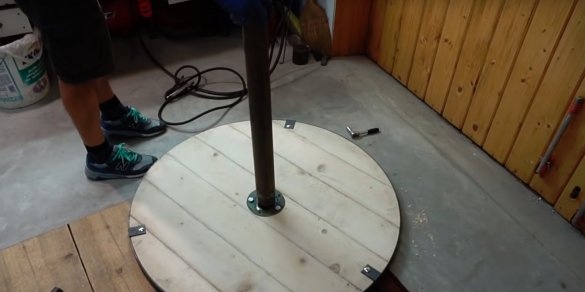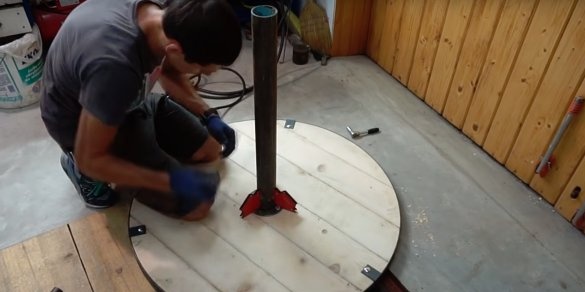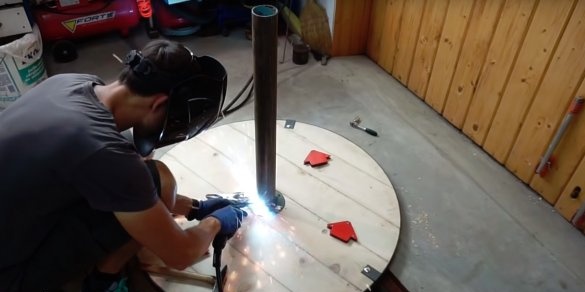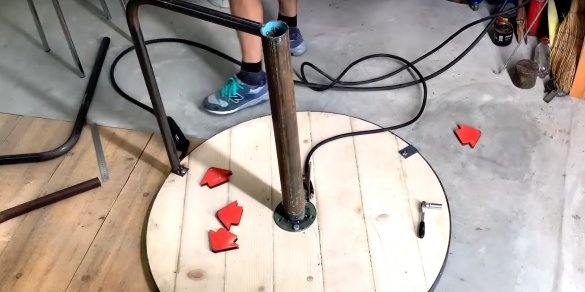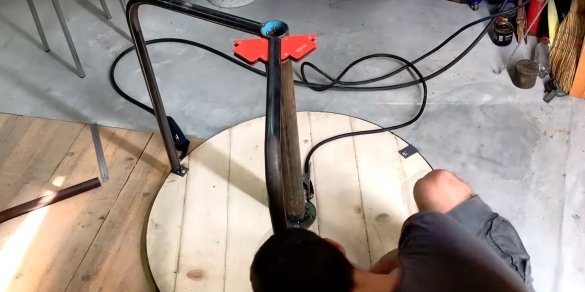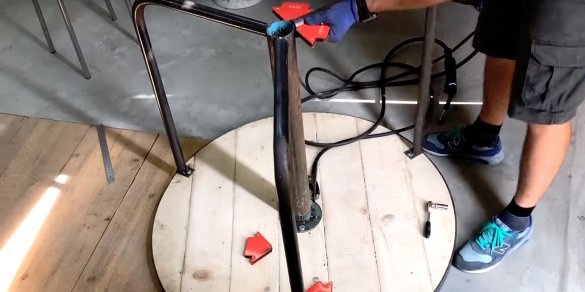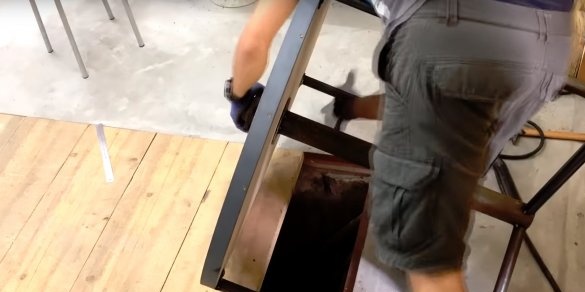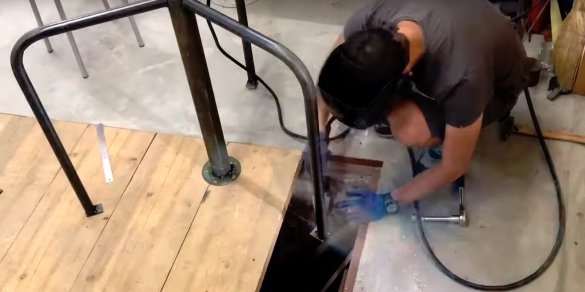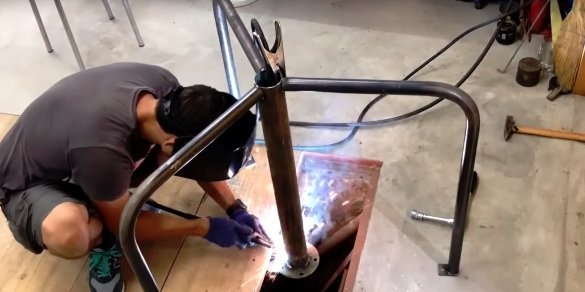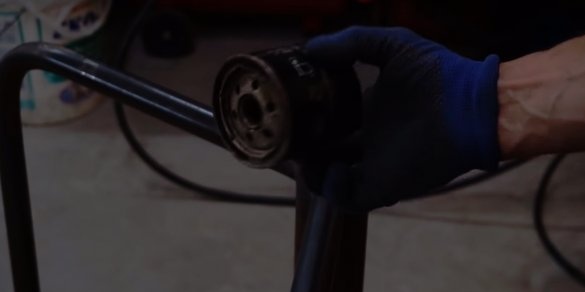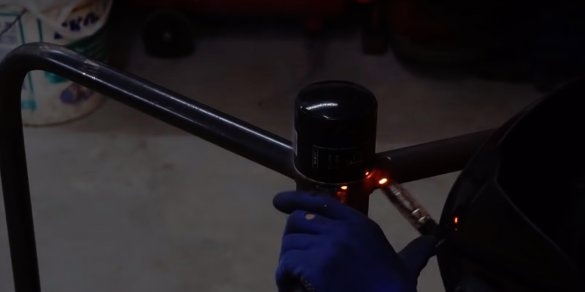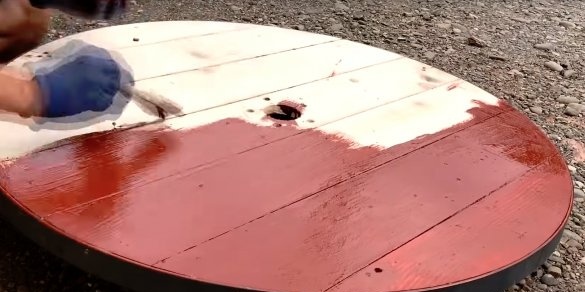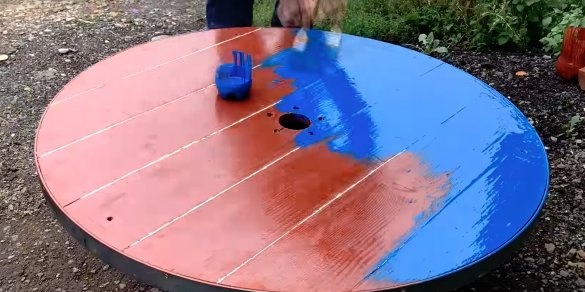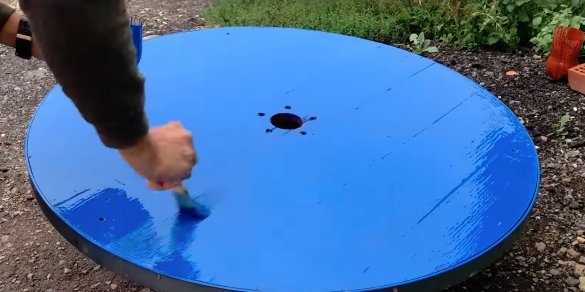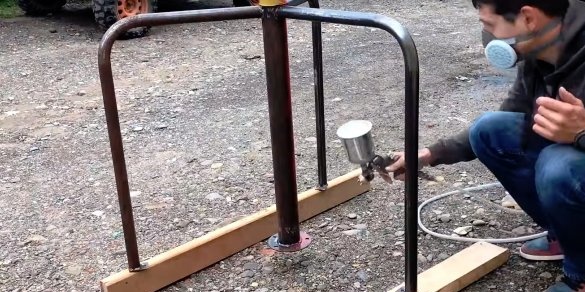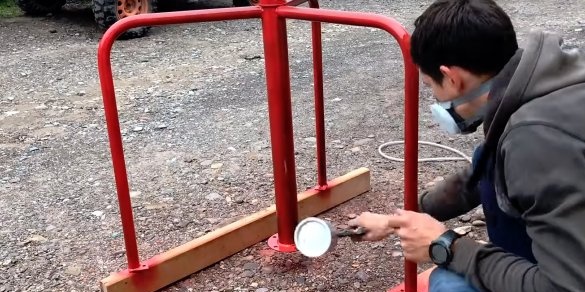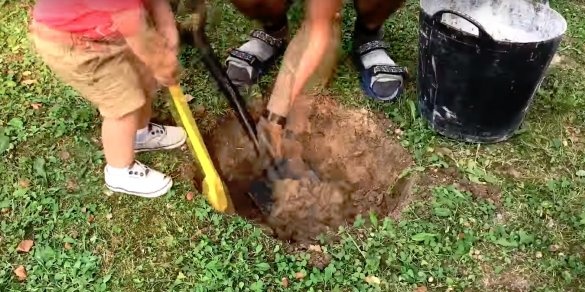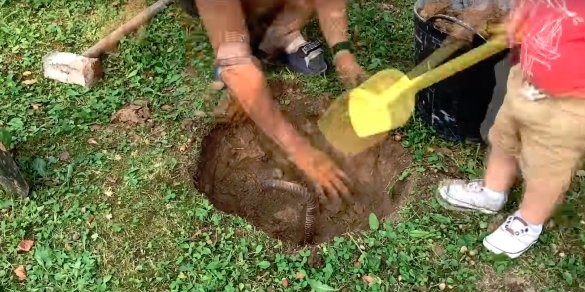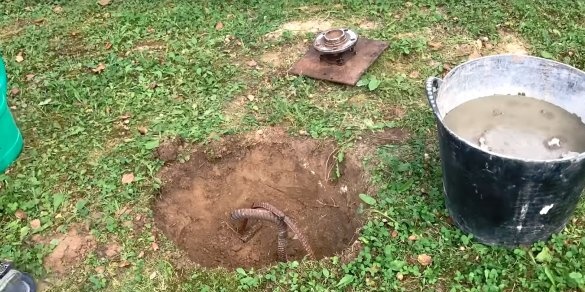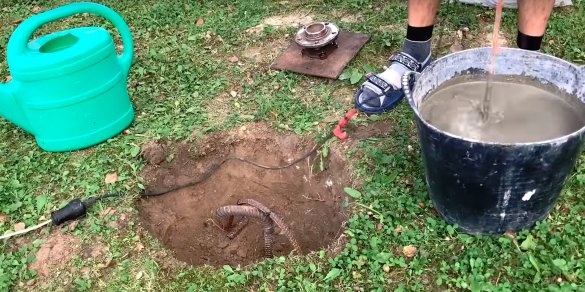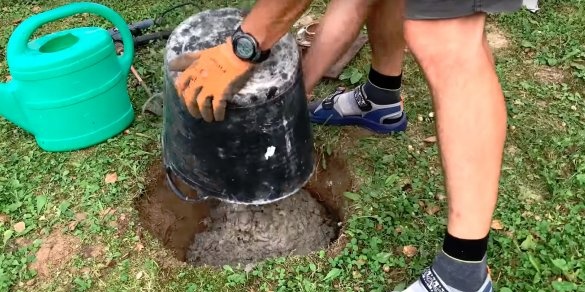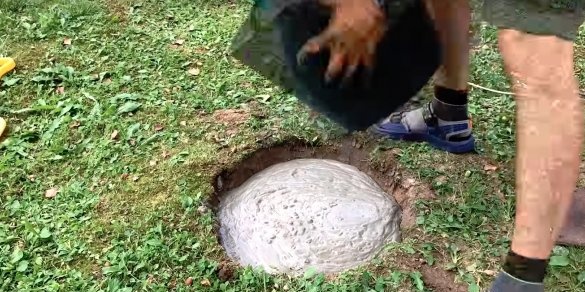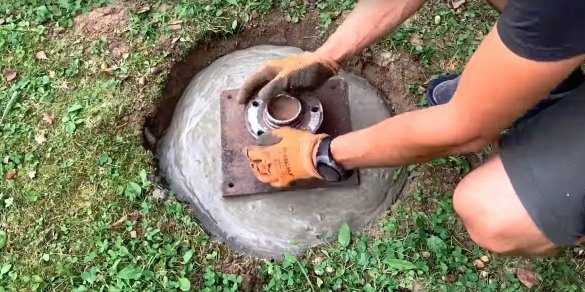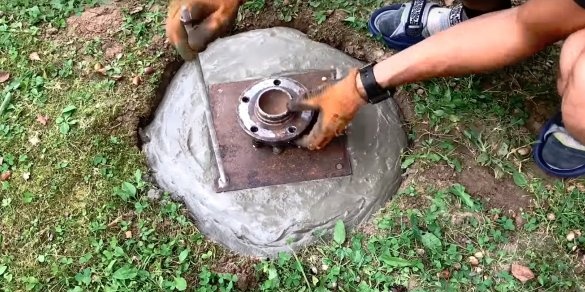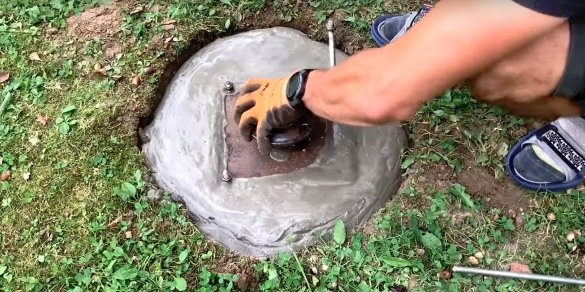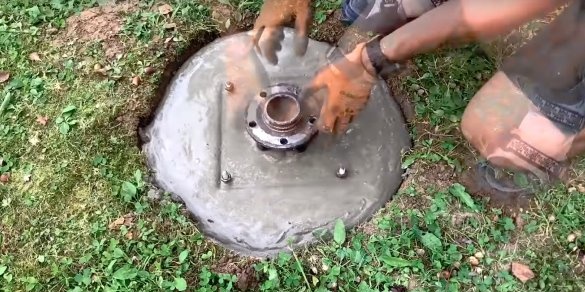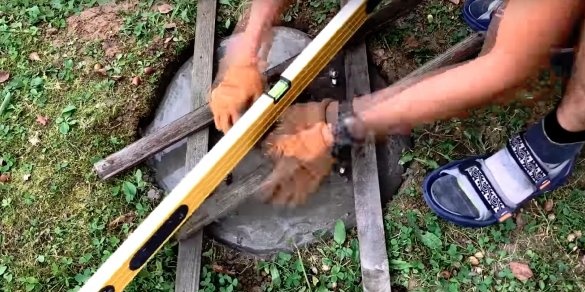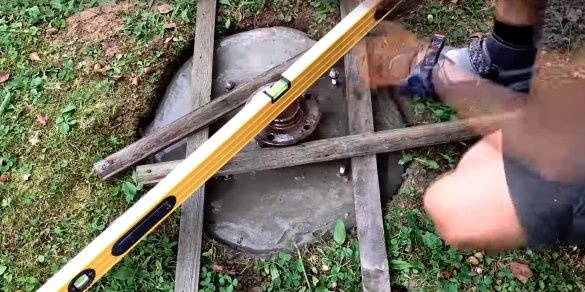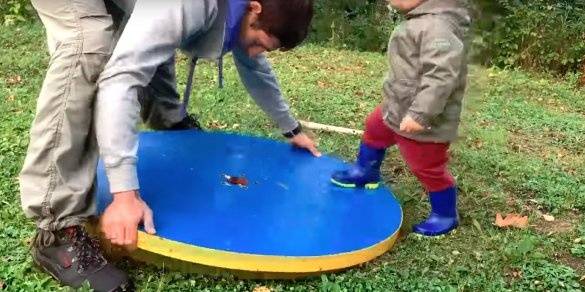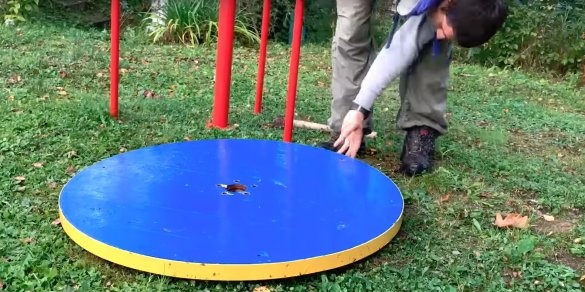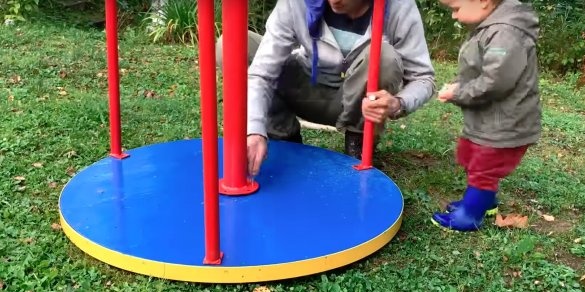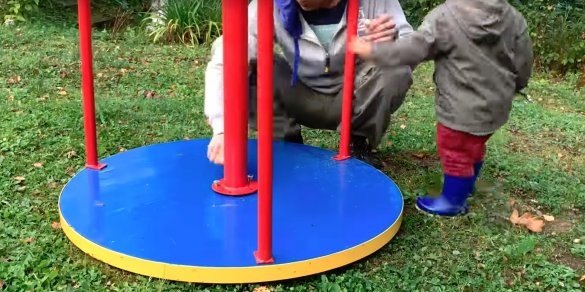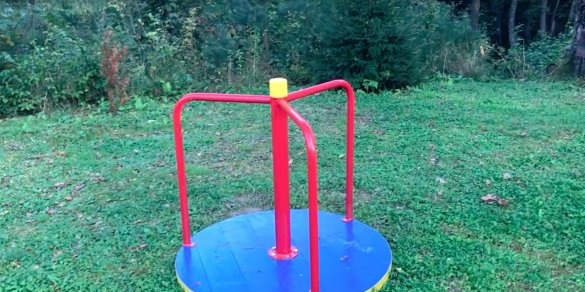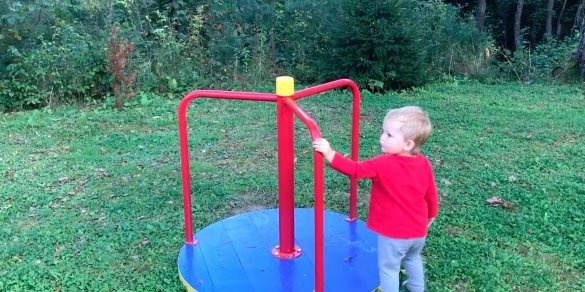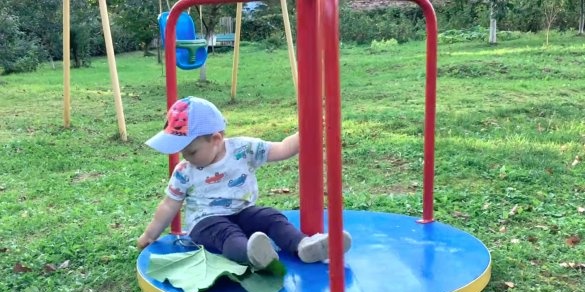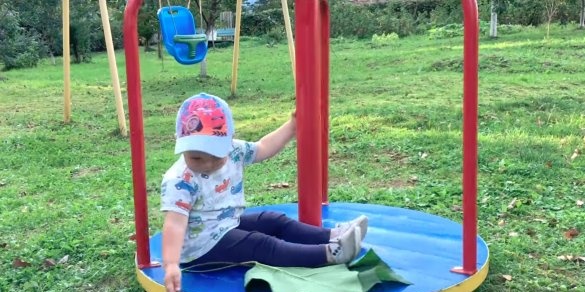Hello readers and the inhabitants of our site.
For the author of this home-made carousel, it all started with the fact that he had procured a car hub somewhere, and even in working condition. Without thinking twice, he decided to use it as a rotating mechanism for a children's carousel.
The manufacture of such a carousel, the process is quite time-consuming. But with the proper approach, as well as in the presence of a motivator, in the form of a child sniffing over his shoulder and looking forward to the result, the author coped with such a craft quite quickly and easily. Moreover, the motivator not only nozzles, but also helped to create this cunning design.
For the manufacture of the author used.
Manufacturing process.
In the beginning, the author decided to make a carousel platform. To do this, he will use a 20x150mm board. The author laid out seven boards on a flat surface, pulled them together with straps, and secured them with transverse boards using self-tapping screws.
Then I drilled a hole in the center and using a ruler mounted on a drill, drew a circle with a diameter of about 1 meter.
Cut the circle with a jigsaw. Since the edges of the circle seemed not to be perfectly smooth to the author, he decided to machine the edges of the circle with a milling cutter. Although I think it was possible to skip this operation, given that later the edges of the circle will be closed with a metal rim. But here, as they say, the author of the product knows better.
The surface of the circle, the creator grinds using a grinder, achieving the smoothest surface of the boards.
As I said, the end of the circle will be covered with a metal strip. The author takes a rolling machine for metal, which by the way also made himself. And a 3mm strip of metal passes through it, 40mm wide and more than 3300mm long. If at home this fixtures no, then such a service will be able to perform in metal.
The author puts the resulting strip on a circle, cuts off the excess with a grinder. At the ends of the strips, the author temporarily welds two nuts and, using a pin, tightens the strip. The seam is welded. The author breaks off the welded nuts, brews and polishes the seam.
Next, the master proceeds to the manufacture of carousel fasteners.
It cuts a square 30x30mm from sheet metal with a thickness of 8mm, cuts a hole in the center, the diameter of the hole is equal to the diameter of the reverse side of the hub. Since the exact hole cannot be cut, the author modifies the edges of the hole with a grinder, putting five already worn disks on the grinder at once. Also in this plate, the author will make 4 holes for the hub bolts.
Circle overlay, diameter 20mm, thickness 5mm, the central carousel tube will be welded to it.
The author cuts another detail from metal 5 mm thick. This is a 25x25mm square. With rectangles 30 mm wide cut in its corners.
And in the center is a hole with a diameter equal to the diameter of the outer side of the hub.
In detail, the author drills five holes aligned with the holes in the hub. The author drills the holes by putting a plate on the hub. The author makes the same five holes in a metal circle.
In the carousel platform, the author makes a hole with a diameter equal to the outer diameter of the hub. Then he puts the hub and drills five holes for the bolts.
Assembles the mechanism in the following sequence, on the front side of the platform there is a circle, on the reverse side of the platform is a square with cutouts, then a hub. All this tightens with M10 bolts.
Then the author strengthens the platform using a 20x30mm profile, which welds on one side to a metal rim and on the other side to a square with cutouts. The author first grabs the profile to the square. Then he has to remove the square in order to weld the profile from the back. And only after that it reassembles the structure and welds to the metal rim.
For handrails, the author will use a pipe with an inch diameter, he takes three pieces of 1.2 m. These pipes need to be bent at an angle of 90 degrees. Since the author has nothing to do, he has to turn to specialists for help. In extreme cases, the pipes can simply be cut and welded at the right angle. The length of the bent pipes should correspond to the length of the central pipe. The author will use a central pipe with a diameter of 70mm and a length of 750mm.
The author sets the pipe on a metal nickel, aligns, and welds.
When the central pipe is welded to it, you can attach the handrail pipes. The author grabs the pipes. At the ends of the pipes catches metal spots with drilled holes.
To avoid damage to the flooring from welding, the author removes the metal structure and scalds it. An open hole remained in the upper part of the thick pipe, the author decided to eliminate it by welding a car oil filter.
Taking advantage of the fact that the handrails are removed, the master covers the platform with two layers of paint.
The author also paints the railing.
While the paint on the product dries, the author and his assistant dig a hole.
For reliability, the author clogs several pieces of reinforcement in the bottom of the pit.
Then the author makes a cement-sand mixture into which he adds gravel and pours it into a dug hole. In total, the author took three buckets of the mixture.
Now you can mount the hub. To do this, the author screwed an 8mm square platform to its rear side. At the edges of the square, the author made holes in which, when mounted in concrete, he inserts studs with M10 thread with nuts screwed on the edges for more reliable fastening.
The plane of the hub aligns in level.
After the concrete has hardened, you can collect all the components of the carousel. For this, the author again uses child labor.
That's all, you can wipe the sweat from your forehead and invite the verification commission.
Judging by the photo, the commission was satisfied.
On this, I say goodbye to you, thank you for your attention.
Make your children happy more often.

